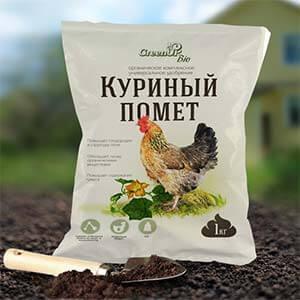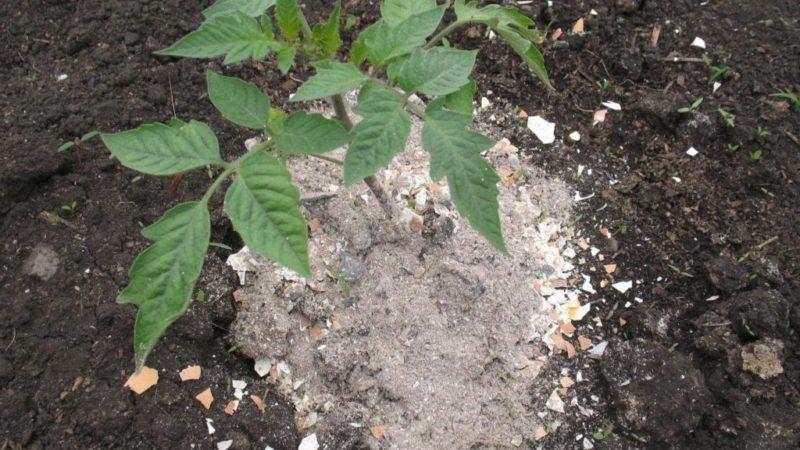How to feed tomatoes during fruiting in a greenhouse: the best formulations and instructions for the procedure
Through winds, torrential rains, thick fogs - all this is typical for the northern regions of Russia. How to grow a rich and tasty tomato crop in such conditions? The answer is simple: put a greenhouse in the summer cottage.
In addition to weather protection, the greenhouse gives vegetables the required temperature and degree of lighting. And in order for the number of ripe tomatoes to grow, mineral and organic fertilizers are introduced into the soil during the ripening period of tomatoes.
The content of the article
Top dressing of tomatoes
During the fruiting period of tomatoes pay increased attention to feeding. The taste of vegetables, as well as the degree of keeping quality, shelf life depends on their quality and quantity.
Specificity and features of the procedure
As soon as the fruiting period begins, remember the main features of the organization of fertilizing:
- When feeding tomatoes during this period, be careful with nitrogen-containing fertilizers. The fact is that the entire effect goes to the growth of green mass, as a result of which the tomatoes themselves remain without nutrition. Their formation and growth slows down.
- Remember to cut back on the amount of water for irrigation... Add aloe juice or onion peel-based solution to the water. This will help to avoid slowing plant growth.
- Prepare potassium-containing dressings, as the tomato needs it most at this time. Avoid top dressing with potassium chloride, because the tomato does not tolerate the potassium content in the soil itself. They feed carefully, observing the dosage.
The role of macronutrients in the development of tomatoes
Macronutrients are essential for all plants, regardless of where they are planted. Consider what each element is responsible for and what is its significance in the development of a tomato.
Nitrogen
Bushes need for the development of green mass. The lack of nitrogen leads to the fact that the leaves do not grow, have a nondescript appearance. The upper leaves do not curl, the older plates die off, have a dull or faded shade. Because of this, fruiting is delayed. Nitrogen-containing dressings correct the situation.
For example, use a solution of 20 liters of water, 1 liter of mullein and 2 tablespoons of nitrophosphate. Water the plants at the rate of 0.5 liters of liquid per 1 bush. Fertilizing the bushes is best in the morning or evening.
Such dressings are carried out no more than 2 times a month. Also, nitrogen fertilizers often contain phosphorus. It helps shrubs to tolerate cold more easily. Lack of phosphorus causes the leaves to take on a purple hue. We'll talk more about this below.
Important! With a normal nitrogen content, the leaves have a color and size characteristic of each variety. In the morning, the top curls up, and in the afternoon it becomes straight.
Phosphorus
During fruiting, with a lack of phosphorus, the leaves appear brown spots in the areas between the veins. An excellent remedy is a superphosphate extract. Pour 2 tablespoons of superphosphate with 1 liter of boiling water and leave overnight. Next, bring the volume to 10 liters by adding water and water the beds. Sometimes gardeners use a simpler method and simply pour 0.5 teaspoon under each bush.
Compost with the addition of wormwood is used as an organic phosphorus fertilizer. When phosphorus is used on acidic soils, it is necessary to lime the soil first. To do this, 1 month before fruiting, wood ash or lime is scattered on the beds.
Potassium
The lack of potassium appears in a brown rim along the edge of the leaf. The leaves roll up into a tube and bend upward. Potash fertilizers have a beneficial effect on plant metabolism. Wood ash or furnace ash is a valuable source. The fertilizer is suitable for absolutely all types of soil, regardless of the acidity level. In addition, ash does not contain chlorine, which is very harmful to tomatoes.
Banana peels are also used as a source of potassium. One banana contains about 0.5 g of potassium. Just collect the skins and add them to the compost. Bananas also contain calcium, magnet, and phosphorus.
Magnesium
Signs of magnesium deficiency are light spots on the leaves, white streaks and weak leaf plates. Use magnesium sulfate to correct the situation. It also contains sulfur, which is essential for normal plant growth.
When applying fertilizer, be sure to follow the dosage and instructions for use. After adding magnesium in a dry form, be sure to water the beds, because in a dry environment magnesium sulfate is not active. The drug goes well with products containing nitrogen and phosphorus.
After using the drug, the ripening of tomatoes is accelerated, the yield increases and the taste characteristics improve. Plants absorb calcium, nitrogen and phosphorus better.
Procedure and stages of the procedure
The organization of feeding is as follows:
- preparation of the applied fertilizer;
- if the soil is dry, then moisten it with a little water before feeding. Melt or rain is best suited for this. The water temperature must be at least 20 degrees;
- ventilate the greenhouse - the plant needs fresh air;
- fertilize each bush separately.
Top dressing is best done early in the morning so that the nutrient solution or powder is absorbed by the evening. Leaves, stems and tomatoes should be dry at night. Otherwise, the risk of developing fungal infections increases.
Types of dressings
How to feed tomatoes during fruiting in a greenhouse? Depending on the method of feeding, there are root and foliar. The root method is the most popular. It saturates tomatoes with vitamins using root watering.
Foliar dressing is applied directly on top of the bush. For its preparation, a weaker concentration is used to avoid burning the leaves. Both root and foliar feeding are beneficial for plants, especially if they are alternated with each other.
Purchased drugs
Gardeners love to "feed" tomatoes with the following drugs:
- «Kornevin". The name speaks for itself: first of all, the drug has an excellent effect on the root system of the bush, making it even more developed and powerful. In addition, it reduces the impact of adverse external factors. Prepare protective clothing and gloves to work with Kornevin. Sold in bags of 0.4 g. The price of one package is 11 rubles.

- «Solution"Contains nitrogen, phosphorus, potassium, and other trace elements necessary for the plant. About 20 mg of "Solution" is added under the root. It is quickly absorbed by tomatoes, quickly eliminates the lack of any substance. Used as a solution. The price for 0.5 kg is 53 rubles.
- «Station wagon". Granular fertilizer is effective and affordable for any gardener. The best effect is achieved if applied before loosening or watering. Provides proper assimilation of nutrients by tomatoes, low levels of nitrates, good harvest. 5 kg of "Universal" costs 299 rubles.
- «Orgavit". The fertilizer is based on dry horse manure. It occupies a leading position in the content of useful elements. "Orgavit" is practically not washed out of the soil. Produced in the form of granules, non-toxic. For 2 kg of funds, gardeners pay 139 rubles.
- «Biohumus". It is a liquid organic solution. Contains humic acids, biologically active substances, micro- and macroelements, amino acids.3 liters of "Biohumus" cost 199 rubles.
Read also:
The best recipes for bread dressings for tomatoes.
How to feed tomatoes during flowering in a greenhouse and fruiting.
Folk remedies
Popular remedies include:
- Chicken droppings - saturated with calcium, potassium and nitrogen. To use solutions based on chicken manure should only be introduced under the root of the bush. There are no toxic substances in the product, it increases the resistance of tomatoes to diseases, accelerates their growth. Dilute 1 liter of water and 1 liter of dry chicken droppings, let it brew for 5 days in a warm place. The infusion is stored for a long time, so you can fertilize plants with it throughout the whole season.
- Boric acid - increases the amount of sugar in plants, protects against parasites and diseases. You can use the root or non-root method. Prepare a solution of 1 liter of water and 1 kg of boron powder. It is better to use hot water as this will dissolve the powder faster. During fruiting, use a mixture of boric acid and potassium permanganate. So you will provide tomatoes with reliable protection against late blight.
- Suitable for feeding in the greenhouse fresh or dry yeast... Dissolve 100 g of fresh yeast in 10 liters of water and immediately pour over the tomatoes with the resulting liquid. For each plant, use 0.5 liters of solution. Yeast will not strengthen tomatoes as much as boric acid or chicken droppings, but rather have an overall healthier effect.
- Ash is an excellent fertilizer at any stage of tomato cultivation. During the fruiting period, a solution based on wood ash is especially actively used. To do this, dissolve 1 glass of ash in 10 liters of water, add liquid soap to the mixture. The solution is sprayed on the bushes from a spray bottle.

- Young nettle leaves serve as an excellent top dressing. The container is 75% filled with nettle and water is poured, after which it is infused in a dark place for 10 days. No more than two dressings are carried out per month.
- Eggshell good for both young shoots and mature bushes. Soak the crushed shells in warm water and let it brew for 3 days. As soon as an unpleasant smell appears, pour the solution over the beds.
Useful Tips
Farmers and summer residents advise:
- if the first brush has large fruits, and the others are undeveloped and small, then immediately remove the tomatoes from the first brush and abundantly pour the ash solution over the beds. In a short time, vegetables are formed on the lower brushes;
- if yellow or white spots appear on the leaves, treat the bushes with a garlic solution. Most likely, the plant gets sick with a fungus;
- if the leaf becomes rough and dull, exclude superphosphate from dressings, and increase the dose of potassium and nitrogen;
- before fertilizing, it is recommended to water and loosen the beds;
- when using toxic fertilizers, follow the safety rules. At home, such drugs are stored out of the reach of children.
Reviews
Here's what experienced summer residents say about greenhouse fertilizers:
Maria, Kislovodsk: “I always closely follow the appearance of tomatoes, I pay attention to changes in the color or shape of the leaves. As a prophylaxis for various diseases, I use an ash solution. This is my favorite effective remedy, it makes the harvest tasty, protects against pests. I don’t quite trust chemical preparations, I prefer to use only organic materials ”.
Alexander, Moscow: “In my opinion, there is nothing better than mullein and droppings, they nourish the plant, while being absolutely safe. I make such dressings both at the seedling stage and at the fruiting stage. Every year is fruitful ”.
Elena, Saratov: “In caring for the bushes, I actively use various fertilizers: both natural and chemical. I especially like "Solution" and "Kornevin". They are very easy to use and inexpensive. You can buy them at any gardening store. "
Conclusion
It is always important to take care of tomatoes in the garden.It doesn't matter if they are planted in a greenhouse, greenhouse or outdoors. The first signs that the plant lacks fertilizer are external changes in the bush. First, find out what exactly the tomatoes are missing, and only then act.
A variety of organic and mineral fertilizers allows you to give the bushes everything they need in a short time. Remember that root dressings are best alternated with foliar applications.